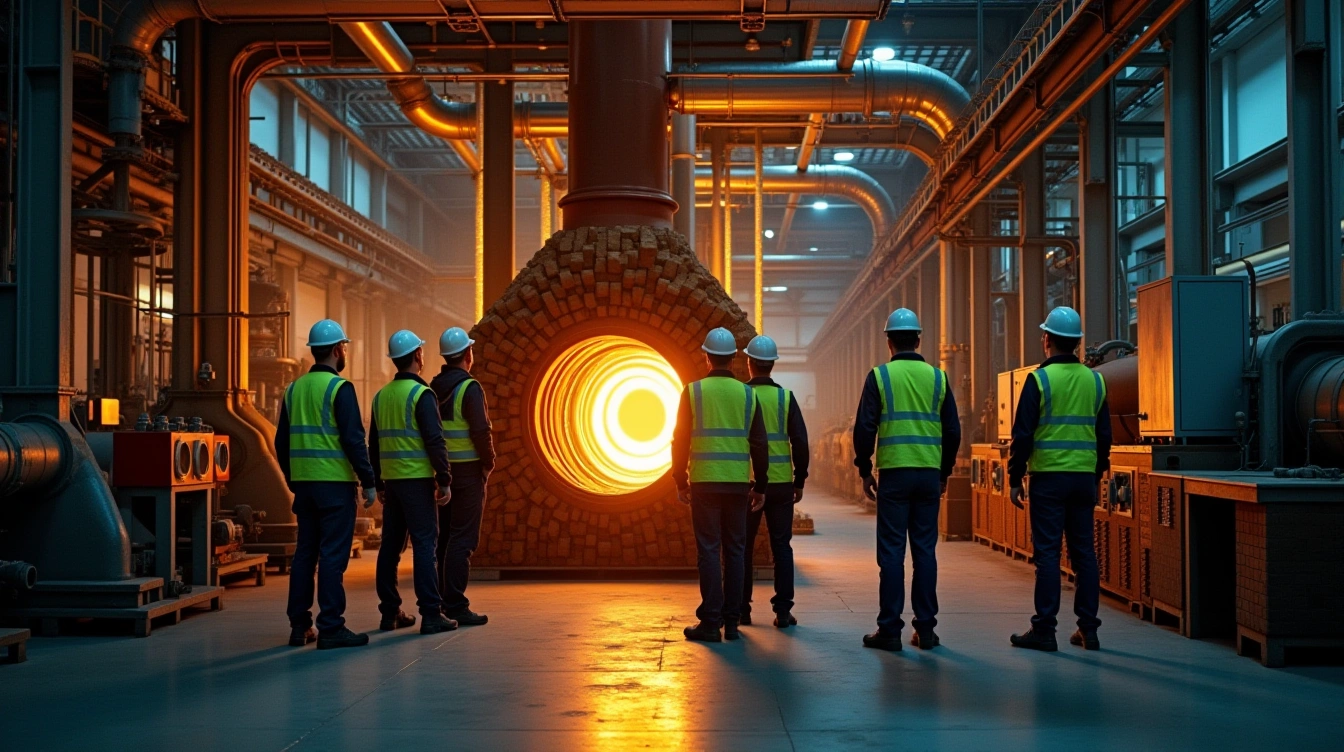Maximise industrial efficiency and durability with refractory solutions engineered for extreme temperatures and harsh conditions. Advanced materials like NORFLOW® castables offer quick installation and reliable performance, while specialised linings support diverse sectors from steelmaking to waste-to-energy. Leveraging decades of expertise, these customised solutions enhance operational resilience and extend equipment lifespan, meeting the precise demands of modern high-temperature processes.
Comprehensive Industry Overview of Refractory Materials
Heat-Resistant Materials
Refractory materials, characterized by low thermal conductivity and high mechanical strength, are essential in high-temperature environments. They withstand extreme heat, thermal shock, and chemical reactions, ensuring durability and safety.
In parallel : Achieving investment mastery: harnessing predictive analytics as a financial advisor in nottingham
Industry Standards
Quality assurance relies on rigorous industry standards and certifications, such as ASTM and ISO, which validate material performance and safety. Among these, fireclay bricks and advanced castables are staples, tailored for specific applications.
Types of Refractory Materials
- Ceramic and castables offer versatile solutions for different furnace components.
- Bricks are traditional and reliable, providing structural integrity.
- Coatings serve as protective layers against corrosion and thermal wear.
You can view more details on this page: http://mxs-refractories.com/. Their expertise ensures materials meet stringent functional and safety criteria, supporting industries like steelmaking, glass, and cement.
Also to see : Unleashing team innovation: harnessing open-source technologies in a cambridge research laboratory
Advancements and Innovative Refractory Technologies
Latest Materials for Extreme Conditions
Modern heat-resistant materials have evolved significantly for use in industrial furnace linings. Development in high-alumina materials and ceramic fiber products enables superior thermal barrier coatings, improving both insulation and longevity. Such innovations, including ceramic reinforced castables, directly address thermal shock resistance, which is critical for molten metal containment and kiln refractory repairs. These advanced materials also play a substantial role in steel mill refractory applications and support the unique requirements of refractory solutions for the steel industry.
Sustainable and Recyclable Refractories
Environmental responsibility now guides many refractory material innovations. Refractory recycling methods and refractory waste management strategies help minimize environmental impact while maintaining chemical stability of refractories. For example, lightweight refractory solutions and insulating fire bricks reduce raw material usage in refractory brick installation. Manufacturers also emphasize wear-resistant linings and fireclay bricks made from recycled content when possible.
Custom Refractory Engineering Solutions
Engineered ceramics and customized refractory engineering solutions enable precise adaptation for industrial settings, such as glass furnace refractory lining and refractory applications in cement industry. Case studies demonstrate how refractory mortar mixes and refractory concrete solutions are tailored, using refractory product certifications and stringent refractory material testing, to meet complex needs safely and reliably. This approach supports energy efficiency in refractory systems and ensures durable, long-lasting performance.
Practical Applications and Industry-Specific Solutions
Steel and Ironmaking
Modern industrial furnace linings demand advanced heat-resistant materials and wear-resistant linings to maximize reliability in steel mill refractory applications. Refractory solutions for steel industry processes often involve full lining systems, utilizing refractory brick installation and robust castable refractories to defend against mechanical and thermal shock. Reinforcement and refractory maintenance techniques help prolong linings’ integrity, addressing both refractory failure analysis and the need for efficient refractory repairs. High-alumina materials and fireclay bricks play a fundamental role in molten metal containment and durability, ensuring minimal downtime and improved energy efficiency in refractory systems.
Glass and Petrochemical Industries
In these sectors, the chemical stability of refractories is paramount. Glass furnace refractory lining and thermal barrier coatings must withstand aggressive environments while retaining low heat conductivity. Refractory solutions for petrochemicals prioritize ceramic fiber products and customized refractory engineering focused on expansion properties in refractories and insulation. High-temperature insulation strategies using insulating fire bricks and lightweight refractory solutions boost safety and operational stability, countering corrosion and thermal shock resistance issues present in continuous high-temperature operations.
Waste-to-Energy and Environmental Solutions
Silicon carbide refractory solutions and ceramic reinforced castables offer longevity in high-performance waste-to-energy applications. Such heat-resistant materials are engineered for efficient refractory waste management and sustainability, delivering consistent performance under cycling thermal loads and severe atmospheres. This approach ensures industry compliance and extends refractory material longevity while optimizing refractory energy saving solutions for a cleaner process.
Technical Guidance and Service Offerings
Refractory installation safety must always take precedence to prevent accidents and ensure reliable project outcomes. Effective protocols involve using dedicated refractory installation equipment to handle castable refractories and refractory brick installation, reducing manual handling risks and enhancing installation consistency. Ongoing workforce training strengthens thermal barrier coatings application and mitigates potential hazards in steel mill refractory applications or during the setup of industrial furnace linings.
Robust maintenance strategies underpin refractory material longevity and lower long-term costs. Proven refractory maintenance techniques—such as schedule-based inspection and kiln refractory repairs—help identify vulnerabilities early. For demanding environments, high-temperature insulation upgrades leverage wear-resistant linings, improving thermal shock resistance and heat conductivity of refractory materials. Regular refractory inspection protocols examine fireclay bricks, reinforcing system durability from glass furnace refractory lining to refractory solutions for the steel industry.
Advanced consulting services provide tailored refractory design considerations for complex operations in molten metal containment or energy efficiency in refractory systems. Customized refractory engineering supports optimized refractory shapes and components, while refractory failure analysis and chemical stability of refractories inform ongoing improvements. Clients benefit from hands-on assistance and updated technical guidance, ensuring innovative refractory product adoption and industry standards compliance.











